The 30-Park Geas took me to Petco Park last night, where the 4th-place Padres beat the 4th-place Cubs:
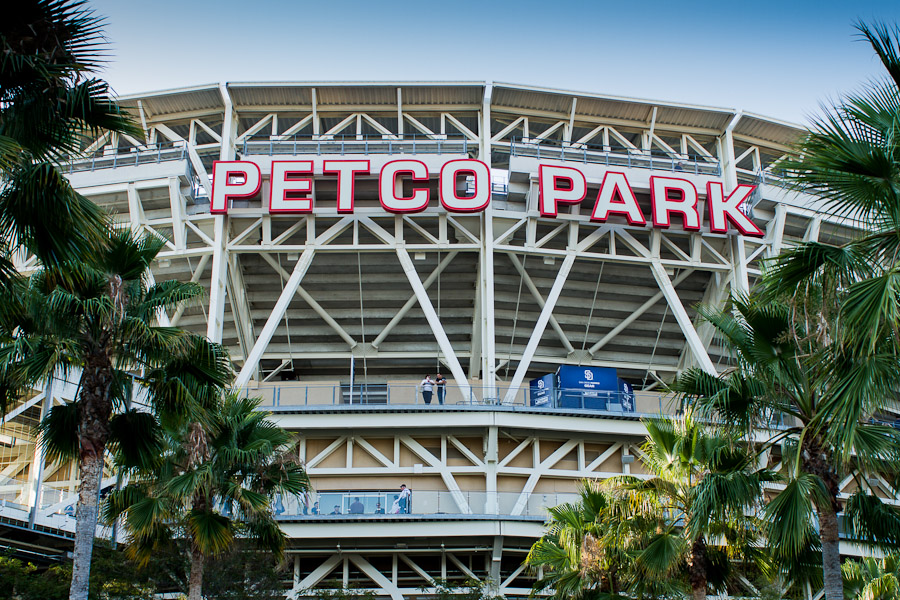
I thought the park was OK. Like some of the other 21st-century parks, it seemed to lack character. It felt more corporate than, say, Camden Yards or even AT&T Park. The fans seemed to agree, as only about 27,000 showed up (out of a capacity of over 42,000.
But the lack of demand for seats let me get an 8th-row field box for under $80. And that, in turn, let me get photos like this one of Alfonso Soriano stealing 3rd:

Or this one of Travis Wood pitching:

I'm now up the coast, at my folks' house. More photos tomorrow.
I'm in San Diego for tonight's Cubs game. Both teams are near the bottom of their divisions, and both have had solid losing streaks lately, so this should be a fascinating game.
While here, I took the advice of one of my oldest-surviving friends—really, she'd inflict violence if I said how long we've known each other—and went over to Coronado for lunch at Alexander's Pizza. Good advice; it was one of the best slices of pie I've had in years.
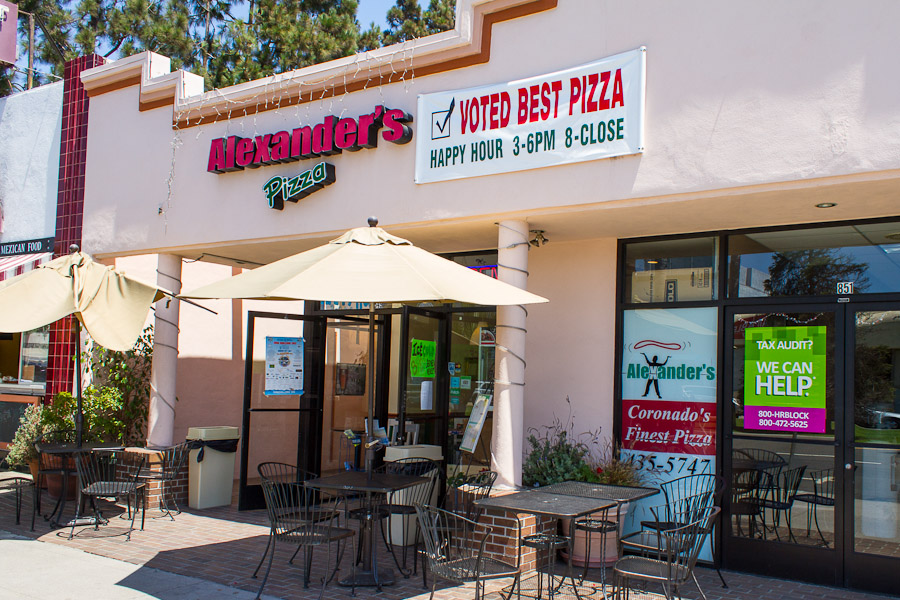
Coming back, I couldn't help notice this passing by:
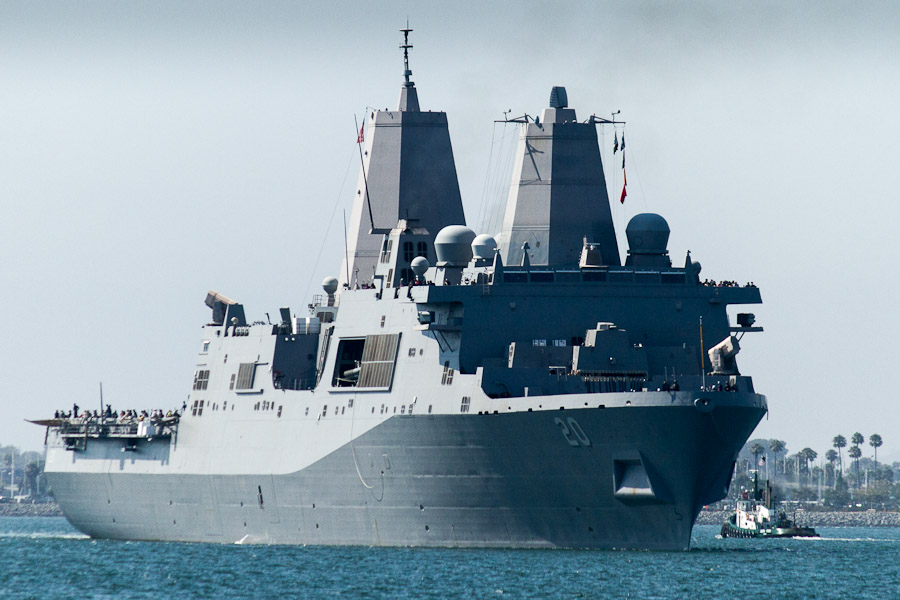
That is littorally huge an amphibious transport dock, the USS Green Bay, designed to carry a battalion of 800 marines hither and yon. Apparently it's heading home, to Naval Base San Diego.
Via Gulliver, airlines earned $22.6 bn from ancillary fees in 2011 (pdf), up 66% from 2009:
Once largely limited to low fare airlines, ancillary revenue is now a priority for many airlines worldwide, and the Review announced today shows how far the industry’s approach to ancillary revenue has developed in recent years.
Jay Sorensen, President of IdeaWorksCompany, says: “Our first report into ancillary
revenue was issued in 2007, when only 23 airlines worldwide disclosed ancillary revenue
activity in financial filings, and the result was a modest €1.72 billion ($2.45 billion). Four
years later, 50 airlines today disclose ancillary revenue activity of €18.23 billion ($22.6
billion). It’s clear that airlines recognize the importance of ancillary revenue and are
developing increasingly innovative ways to generate this.”
"Increasingly innovative." Nice. Anyone remember this ditty from Fascinating Aida, which now applies as much to United as it did to Ryanair?
Despite the obviousness of USAirways acquiring it as American Airlines' only hope for survival, apparently some AMR executives are having a Walter Mitty moment:
A source familiar with the situation said AMR sees itself as an acquirer in potential mergers and at least five airlines -- US Airways Group Inc., JetBlue Airways Corp, Alaska Air Group, Republic Airways' Frontier Airlines, and Virgin America -- will be considered.
American has faced mounting pressure from vocal members of its creditors committee, led by its largest labor unions, who have argued that a merger with US Airways would give the combined carrier a strong network to compete with rivals beefed up by their own mergers. US Airways has expressed interest in a merger and has been courting AMR's creditors.
The problem, one will see immediately, is that AMR doesn't have the resources to take over another airline. And the ones they listed are regional, medium-sized, or discount airlines, not at all likely to help American get out of bankruptcy. Virgin just has to be a joke, of course. Not that there haven't been mergers between Americans and Virgins in the past—I just don't think Richard Branson will put out for Tom Horton in the near future.
Possibly this is just posturing by AMR executives. I hope so. Because if not, USAirways won't buy American, and American will die, and I'll have to fly United. And that would really suck.
Last week the California senate voted 21-16 vote to approve $8 bn in funding for a high-speed rail link between Los Angeles and San Francisco. Naturally there will be some privateering and incompetence, because this is America:
Until the end of last year, SNCF, the developer of one of the world's most successful high-speed rail systems, proposed that the state use competitive bidding to partner with it or another foreign operator rather than rely on construction engineers to design a sophisticated network for 200-mph trains.
The approach, the French company said, would help the California High-Speed Rail Authority identify a profitable route, hold down building costs, develop realistic ridership forecasts and attract private investors — a requirement of a $9-billion bond measure approved by voters in 2008.
But SNCF couldn't get its ideas — including considering a more direct north-south route along the Central Valley's Interstate 5 corridor — out of the station.
Instead, the rail authority continued to concentrate planning in the hands of Parsons Brinckerhoff, a giant New York City-based engineering and construction management firm. Although they have occasionally consulted with high-speed railways, officials decided that hiring an experienced operator and seeking private investors would have to wait until after the $68-billion system was partially built.
But whenever it gets going, the data seem pretty clear: it will hurt the airlines even while getting more Californians traveling:
Earlier this year a pair of Dutch researchers analyzed the passenger market between London and Paris in recent years and found that high-speed rail has been far and away the dominant travel choice in the corridor. Using these findings, they extrapolated that if California's train can make the full trip between Los Angeles and San Francisco in about 3 hours, it will capture roughly a third of business travelers and about 40 percent of the leisure market.
A more recent study, set for publication in the September issue of the journal Transport Policy, suggests that high-speed rail will not only cut into the air market but actually create its own travel demand. The researchers found that more total travelers — air and rail together — existed in various corridors after high-speed rail service began in the country. That means either people saw the service and decided to take trips they otherwise wouldn't have or they shifted from driving to train-riding. The former would be great for California's economy; the latter, a relief to its congested highways.
The change was particularly pronounced in the Barcelona-Madrid corridor. Here the researchers estimate an additional 394,000 travelers in the post-bullet train era — an 8 percent rise from earlier times. That's a good sign for California. The Barcelona-Madrid trip is relatively equidistant to Los Angeles-San Francisco: 314 miles to 348 miles as the crow flies, respectively. The travel time by rail is also comparable, in the neighborhood of 3 hours in each case.
The study also found that opening the Chunnel has shifted travel patterns between the UK and the Continent, getting more people traveling even as fewer people fly.
So who's really behind the opposition to HSR? Can't guess.
Before Saturday's game at Citi Field, I wandered around Flushing Meadows Corona Park, site of the 1939 World's Fair (and an alien spaceship crash in 1997):
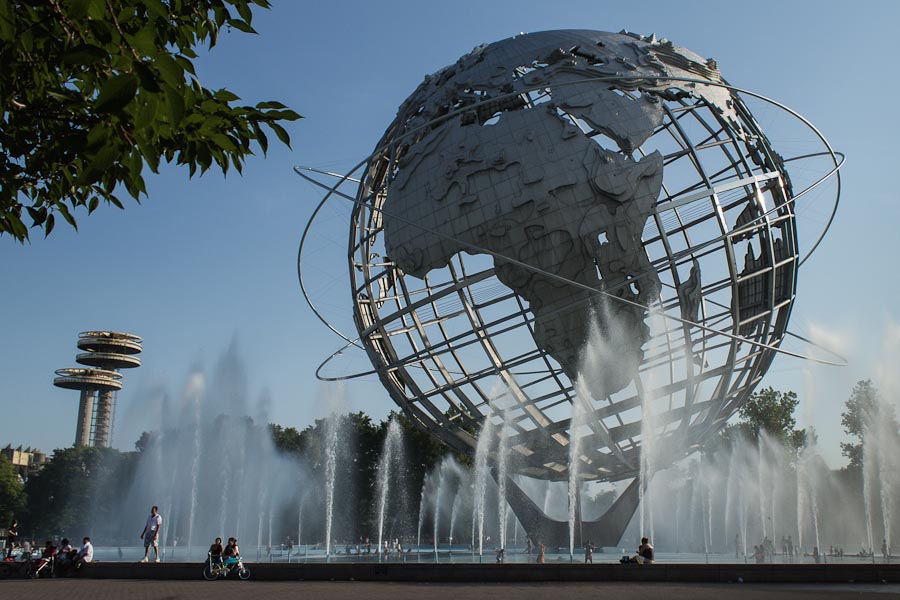
About two dozen kids played in the fountain and in the spray blown off it:
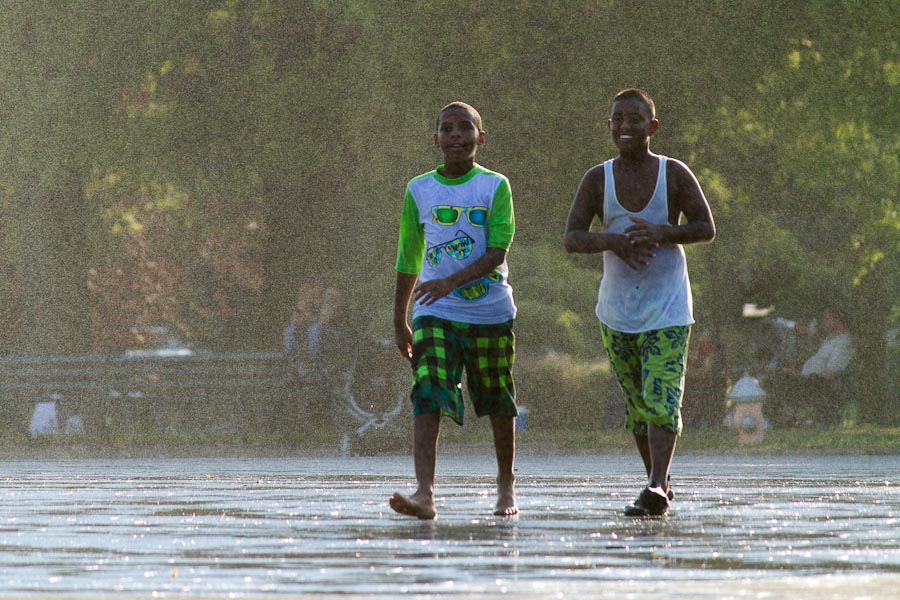
(The post title comes by way of Aimee Mann.)
I visited my 22nd baseball park last night, the quasi-retro Citi Field, to see the bottom-ranked Cubs take on the second-place Mets:
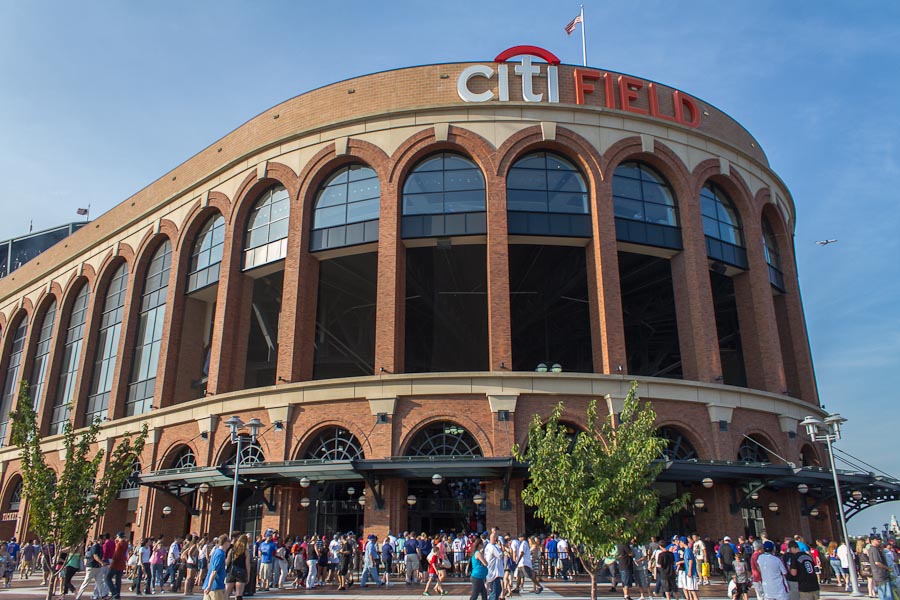
The Cubs got their first run on the Mets' second pitch and by the bottom of 5 they were up by 5 runs. At the point I took this photo, the bottom of the 6th, it was still 7-2 Cubs and the Mets' so-called "fans" were leaving the park like something on the field stank worse than...well, the two teams on the field:
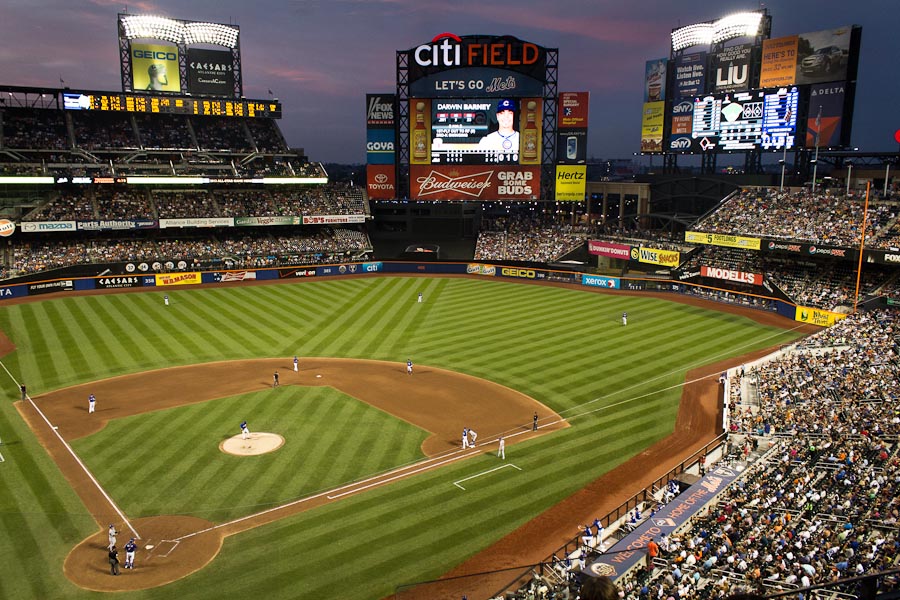
Then, in the bottom of the 9th, still leading by 4, Carlos Marmól took the mound for no reason anyone could discern, and nearly gave away the game:
Entering with a four-run lead, he gave up a solo homer to Valdespin with one out, then walked Ruben Tejada, pinch hitter Daniel Murphy and David Wright to load the bases.
Pinch-hitter Ike Davis followed with a single, bringing up Duda. Marmol's quick reflexes saved the Cubs.
"Marmol's quick reflexes" my ass. With the bases loaded and no one expecting Marmol to do anything helpful, a single-A pitcher from the Carolina League could have caught the droopy thing Duda hit straight at the mound and gotten the game-ending double play. But let's review what happened to get us there: Marmol gave up three runs and three (consecutive!) walks in 10 minutes. And he didn't even need to be there.
Sheesh.
I would like to end on a happy note. I found a decent pale ale at the park, brewed right in New York City: Sweet Action from Brooklyn's Sixpoint Brewery. What a nummy session beer—and the only one sold in 470 mL cans (cf. 350 mL cans for everything else). I'll be make sure to get some Sweet Action next time I'm in New York. (And some Redhead maple bacon peanuts, from Grand Central Market. Who invented these?)
It's pretty warm in New York right now: 33°C. That's cooler than 38°C, the current official temperature in Chicago, making it the third day in a row that Chicago has gotten that hot:
July's opening 5 days the hottest in 101 years
The month is young—just 5 days old. Yet it's 30.2°C average temperature is 7.3°C above normal and makes it the warmest July open since 1911 when the period averaged 31°C.
Apparently relief is coming with temperatures predicted to fall into the mid-20s (mid-70s Fahrenheit) Sunday.
Despite being in New York, I've actually spent the morning and part of the afternoon completing a project for work. I'm done now, giving me just enough time to run an errand before tonight's Cubs game at Citi Field. Look for photos from the game tomorrow afternoon.
2:15 pm:
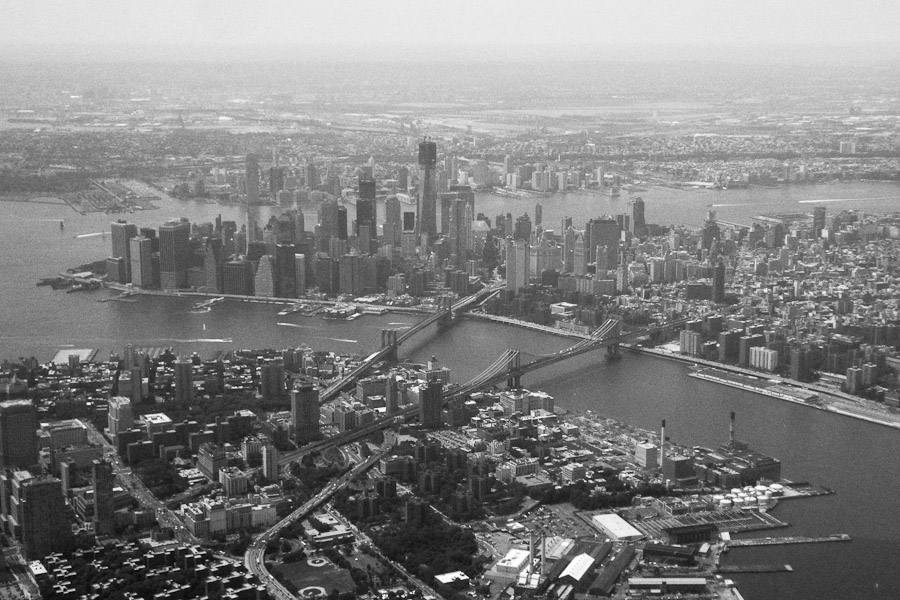
4:10 pm:
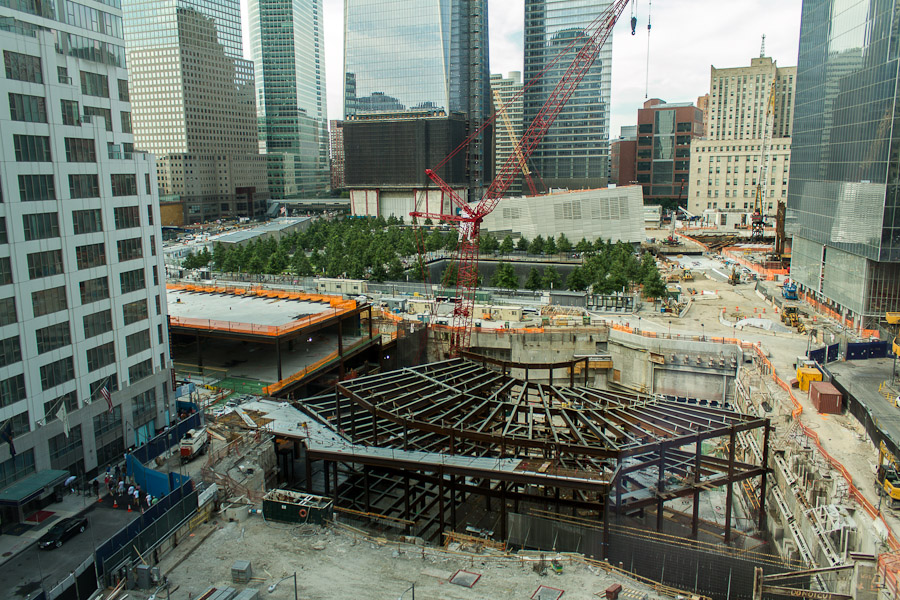
And why am I here? That, at 7pm tomorrow:
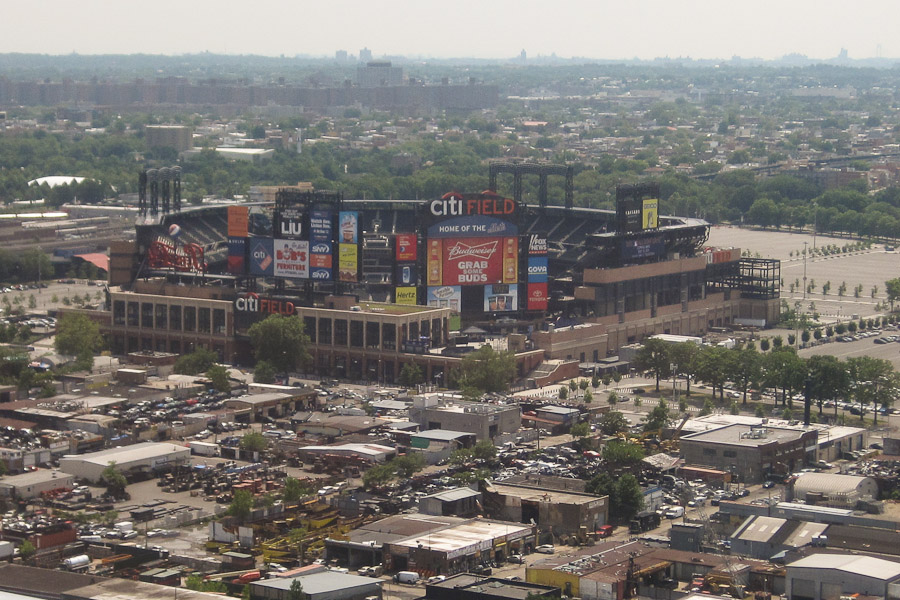
The Atlantic's Max Fisher has a roundup:
Flipping through a few of the many English-language tourist guides provides a fascinating, if non-scientific and narrow, window into how people from the outside world perceive America, Americans, and the surprises and pitfalls of spending time here.
Of the many pieces of advice proffered, four of the most common are: eat with your fingers (sometimes), arrive on time (always), don't drink and drive (they take it seriously here!), and be careful about talking politics (unless you've got some time to spare). But they say more than that.
In many ways, the tour books say as much about the world as they do about the U.S., by highlighting the ways in which American practices and standards deviate. Anyone who's traveled widely, particularly in the developing world, will understand why these books are so emphatic about, for example, punctuality, personal space, and the unreliability of our trains.
All of them, of course, have sections on tipping. It's difficult to overstate how confusing that can be to foreign visitors.